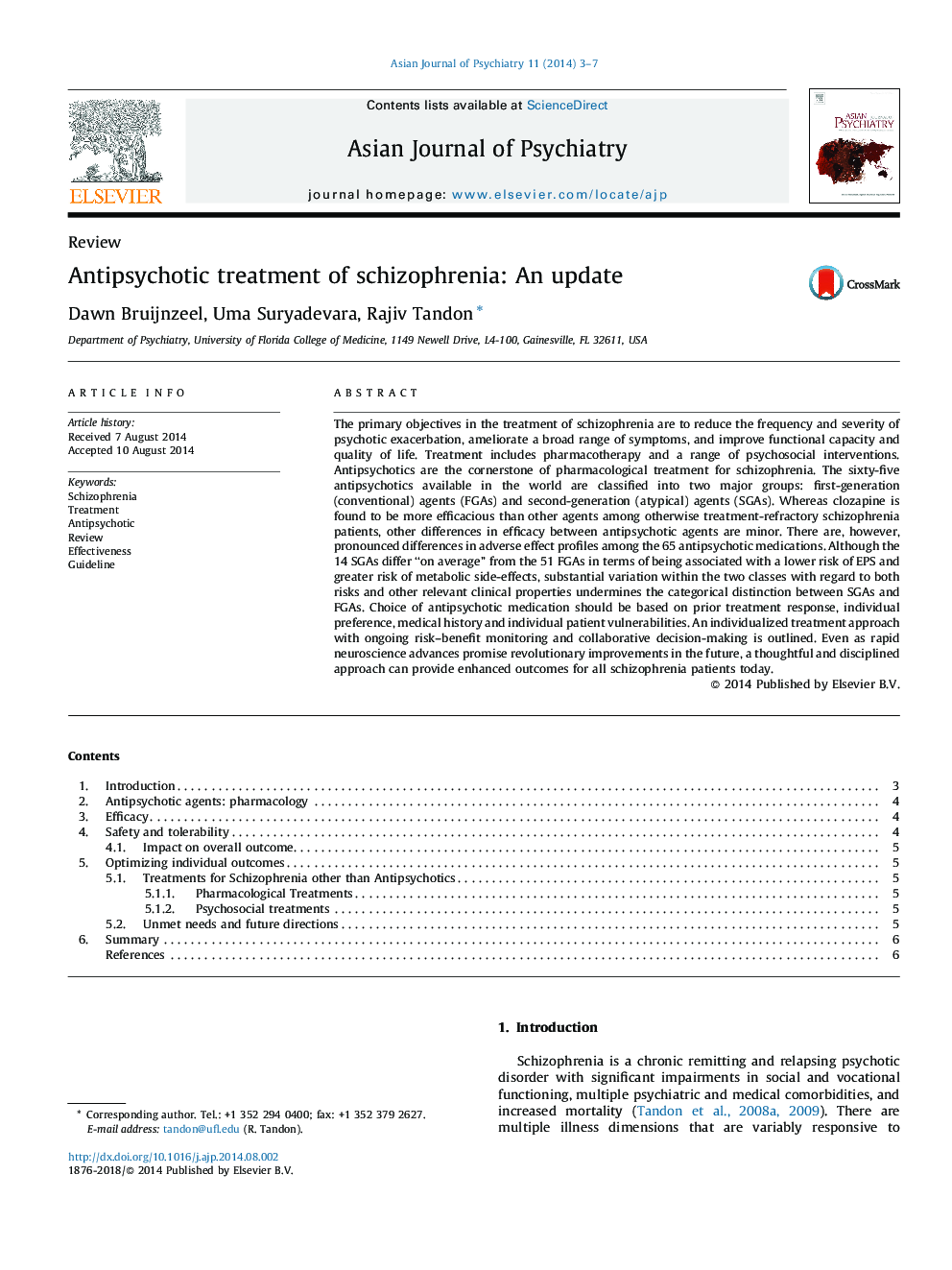| Article ID | Journal | Published Year | Pages | File Type |
|---|---|---|---|---|
| 316809 | Asian Journal of Psychiatry | 2014 | 5 Pages |
The primary objectives in the treatment of schizophrenia are to reduce the frequency and severity of psychotic exacerbation, ameliorate a broad range of symptoms, and improve functional capacity and quality of life. Treatment includes pharmacotherapy and a range of psychosocial interventions. Antipsychotics are the cornerstone of pharmacological treatment for schizophrenia. The sixty-five antipsychotics available in the world are classified into two major groups: first-generation (conventional) agents (FGAs) and second-generation (atypical) agents (SGAs). Whereas clozapine is found to be more efficacious than other agents among otherwise treatment-refractory schizophrenia patients, other differences in efficacy between antipsychotic agents are minor. There are, however, pronounced differences in adverse effect profiles among the 65 antipsychotic medications. Although the 14 SGAs differ “on average” from the 51 FGAs in terms of being associated with a lower risk of EPS and greater risk of metabolic side-effects, substantial variation within the two classes with regard to both risks and other relevant clinical properties undermines the categorical distinction between SGAs and FGAs. Choice of antipsychotic medication should be based on prior treatment response, individual preference, medical history and individual patient vulnerabilities. An individualized treatment approach with ongoing risk–benefit monitoring and collaborative decision-making is outlined. Even as rapid neuroscience advances promise revolutionary improvements in the future, a thoughtful and disciplined approach can provide enhanced outcomes for all schizophrenia patients today.
